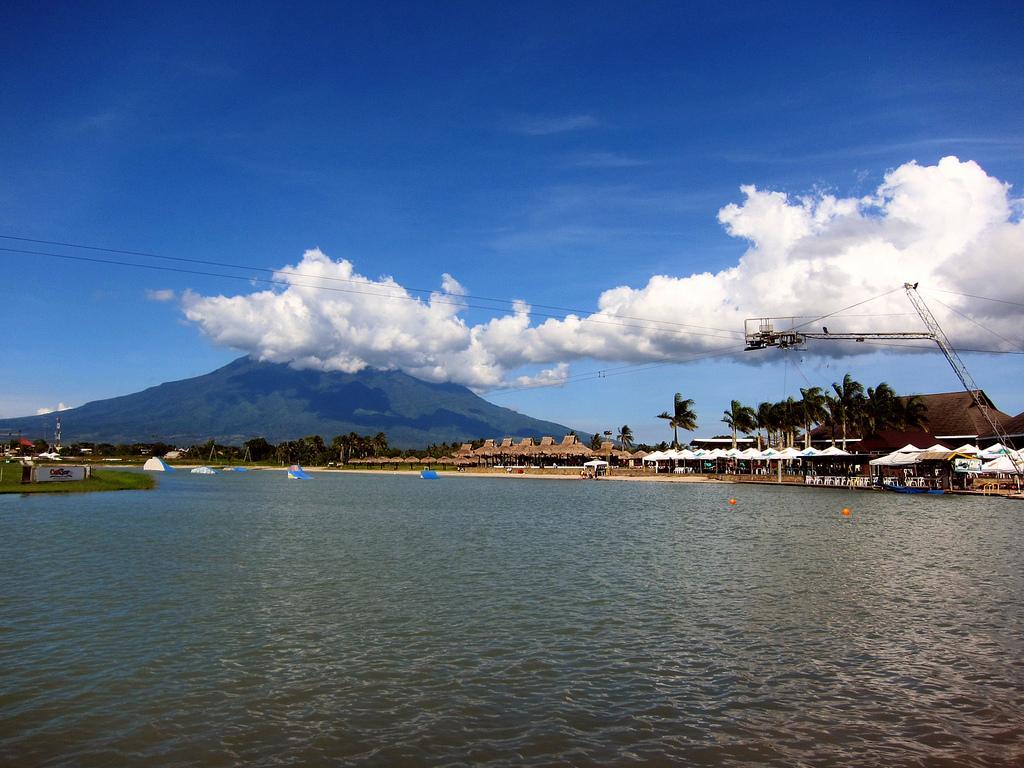
The mighty Isarog is perhaps one of the more defining sights in the Bicol Region, an imposing figure that has been truly blessed by nature. People have come from all over the world to become witness to its amazing biodiversity or to climb the mountain to glimpse the breathtaking view from its peak and crater.
A traveler arriving to Naga by land or by air will always be greeted by the sight of a dormant volcano rising from the plains of Bicol Region. Mt. Isarog’s imposing and seemingly frightening silhouette dwarf Naga and surrounding towns, the same communities it sustains through the abundance of water in its many rivers, streams, and waterfalls.
Approaching Naga, a traveler can expect to see the mountain growing larger and larger until it dominates much of the Eastern sky. In fact, sunlight reaches Naga much later than other towns because of Mt. Isarog’s location on the eastern part of the Bicol peninsula. Visitors to the city often say that you have not experienced the Naga way of life if one has not witnessed the sun peeking from behind Mt. Isarog in the early dawn lights. Like an apparition appearing from the dark, the mountain basks in the light of the early morning sun, appearing larger than it really is.

At more than 5,000 feet above sea level, Mt. Isarog is a magnet for mountain climbers and nature trekkers alike. Conservationists and nature lovers love the mountain for its rich biodiversity and the abundance of endemic species. Declared as a national park in 1934, Mt. Isarog has been fortunate to enjoy conservation and protection efforts of Bicolanos living at its foot. This has made the park a protected area frequented by botanists, zoologists, and many other scientists.
Even Western scientists have returned time and time again to Mt. Isarog to study its lush mossy forests and unique wildlife. Despite the difficult and often challenging trails, thousands of mountain climbers arrive almost daily to the park’s entrance, with accredited trail guides leading the way to its towering peak and giant crater. Adventurers longing for a good challenge will find the ascent rewarding. Giant moss-covered trees and the sound of wild birds and animals fill the air from the start of the climb until the conquest of the peak.

In the afternoon, Mt. Isarog basks in golden sunlight, its larger waterfalls glistening under the sun. The forest canopy also casts shadows, making the slopes appear undulating and giving the slopes a seemingly continuous texture of miniature trees. The many ravines and crevices appear as though carved from a solid block of stone. One can even imagine the hand of God grasping the base of Mt. Isarog and gouging its slopes upward.
With more than 10,000 hectares of pristine forests, streams, and valleys, the Mt. Isarog national park is home to a wide range of endemic animals like the Isolated Mountain Frog, the rare Isarog Shrew Rat, the smaller Isarog Shrew Mouse, several species of snakes, and river crabs. Conservation efforts have also resulted in reported sightings of the endangered Philippine Eagle which used to be called “Monkey-eating Eagle” and is the second-largest bird of prey in the world.
From the peak of Mt. Isarog, mountain conquerors can see the entire province of Camarines Sur as well as the mountain ranges of Camarines Norte in the distance. The meandering Bicol River can also be seen emptying out into San Miguel Bay. Wide stretches of rice fields interrupted by the occasional array of houses and intersected by roads are a sight to behold from 5,000 feet in the air.
Even at lower altitudes, the setting sun offers a majestic view of the entire province slowly being bathed in dimming golden sunlight before being plunged into darkness. At night though when temperatures plummet significantly, the sky merges with the darkness under it, with the star field and the pinpricks of light from Naga below becoming one and indefinable.
At the break of dawn, trekkers at the mouth of Mt. Isarog’s gaping crater can witness the sun rising slowly from the Pacific Ocean and basking the forested and steep crater slopes of Mt. Isarog in warm sunlight. Looking southward, climbers can clearly see the peaks of Mt. Asog, Mt. Malinao, and the world-famous Mayon Volcano lined up in a neat row.
More than thirty known waterfalls offer respite to weary climbers on the way down from the peak. One attractions is the Panigwasan Falls, one among the many watersheds drenching the soil of Mt. Isarog. It is a 4 hour hike from Carolina, a mountain resort about 9 km. from Naga City. Rivulets, streams, and hot springs also abound on Mt. Isarog, giving tired trekkers the opportunity to rest their bodies, listen to the symphony of wild birds and restive monkeys, and experience nature at its best.
Conquering Mt. Isarog is an odyssey like no other. Physical endurance, strength, and stamina may play crucial roles in ascending the challenging trail but the combination of both thrill and satisfaction make the Mt. Isarog adventure the climb of a lifetime.
How to get there
There are planes and buses with trips direct to Naga City. From there, public transport like jeepneys can take you to the Mt. Isarog National Park.










